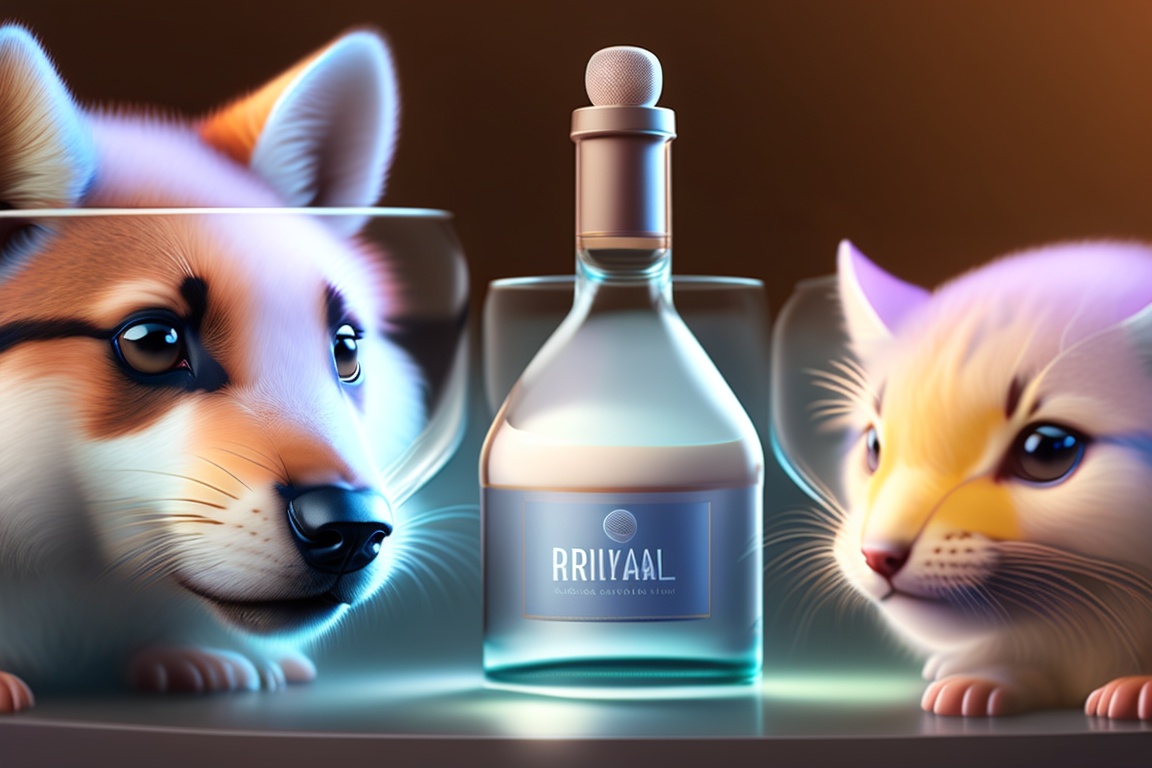Animal testing is a controversial issue that has been debated for decades. While some argue that animal testing is necessary for medical research and product testing, others believe that it is cruel, inaccurate, and unnecessary.
The use of animals in experiments is widely criticized for being bad science and wasting lives, both animal and human and precious resources by trying to infect animals with diseases that they would never normally contract
Millions of animals are used in laboratory experiments every year in the United States alone, and between 85% and 95% of these animals are not protected by the law. Animals used in experiments are subjected to a wide range of procedures, including force-feeding, exposure to toxic chemicals, and surgical procedures, which can cause them to suffer for extended periods of time.
In addition to the actual pain of experiments, a comprehensive view of the situation for animals in laboratories should take into account the totality of the suffering imposed on them, including the stress of capture, transportation, and handling, the extreme confinement and unnatural living conditions, and the deprivation that constitutes standard husbandry procedures.
While there are laws in place to protect animals used in experiments, these laws are often inadequate, and many scientists and researchers argue that non-animal alternatives are more accurate and effective than animal testing.
In this article, we will explore the bad facts about animal testing, including the kinds of experiments animals are used in, the institutions that use animals in experiments, and the alternatives to experiments on animals. We will also discuss the advantages of using non-animal alternatives instead of animals in experiments and what can be done to help animals in laboratories.
The Dark Side of Animal Testing: Understanding the Bad Facts.
- Animal testing is cruel and causes pain and suffering to millions of animals each year.
- Animal testing is often inaccurate and can lead to misleading results, which can harm humans.
- Many animals used in testing are bred for the sole purpose of experimentation and are kept in overcrowded and inhumane conditions.
- Animals used in testing are often subjected to painful and invasive procedures without any pain relief.
- Many animals used in testing are killed at the end of the experiment, even if they could have been adopted or released into the wild.
- Animal testing is often unnecessary, as there are many alternative methods available that are more accurate and humane.
- Animals used in testing are often subjected to repeated experiments, causing them to suffer for extended periods of time.
- Many animals used in testing are not given proper care or attention, leading to illness and death.
- Animal testing is often funded by taxpayers, who may not be aware of the cruelty involved.
- Many animals used in testing are not protected by animal welfare laws, leaving them vulnerable to abuse.
- Animals used in testing are often subjected to stress and fear, which can affect the results of the experiment.
- Animal testing is often conducted without proper oversight or regulation, leading to abuse and neglect.
- Many animals used in testing are not given proper anesthesia, leading to unnecessary pain and suffering.
- Animal testing is often conducted on animals that are not biologically similar to humans, leading to inaccurate results.
- Many animals used in testing are not given proper food or water, leading to malnutrition and dehydration.
- Animal testing is often conducted on animals who are already sick or injured, leading to unnecessary suffering.
- Many animals used in testing are not given proper housing or environmental enrichment, leading to boredom and stress.
- Animal testing is often conducted on animals who are not given proper veterinary care, leading to untreated illnesses and injuries.
- Many animals used in testing are not given proper socialization, leading to loneliness and depression.
- Animal testing is often conducted on animals who are not given proper exercise, leading to physical and mental health problems.
- Many animals used in testing are not given proper pain relief, leading to unnecessary suffering.
- Animal testing is often conducted on animals who are not given proper rest, leading to exhaustion and fatigue.
- Many animals used in testing are not given proper mental stimulation, leading to cognitive decline.
- Animal testing is often conducted on animals who are not given proper care during transport, leading to injury and death.
- Many animals used in testing are not given proper care during the experiment, leading to complications and death.
- Animal testing is often conducted on animals who are not given proper care after the experiment, leading to prolonged suffering.
- Many animals used in testing are not given proper care during euthanasia, leading to unnecessary pain and suffering.
- Animal testing is often conducted on animals who are not given proper care during disposal, leading to environmental contamination.
- Many animals used in testing are not given proper care during breeding, leading to genetic defects and health problems.
- Animal testing is often conducted on animals who are not given proper care during training, leading to fear and anxiety.
The exact number of animals used in experiments each year is difficult to determine. According to estimates, at least 50 million animals are used in the United States alone every year.
Worldwide, the number of animals used in experiments is estimated to be around 192.1 million. However, these numbers are likely underestimates, as many animals used in experiments are not counted in official statistics.
How Many Animals Are Used in Experiments Each Year?
The number of animals used in experiments each year is difficult to determine, but estimates suggest that at least 192.1 million animals were used for scientific purposes worldwide in 2015.

In the United States alone, between 17 million and 22 million animals are estimated to be used annually in research, education, and testing. The vast majority of these animals are mice and rats, which make up 85-95% of all animals used in animal testing.
Which Animals Are Used in Experiments?
A wide variety of animals are used in experiments, including dogs, cats, pigs, monkeys, rabbits, sheep, rats, and mice. However, the vast majority of animals used in experiments are mice and rats, which make up 85-95% of all animals used in animal testing.
What Kinds of Experiments Are Animals Used In?
Animals are used in a wide range of experiments, including biomedical, aeronautic, automotive, military, agricultural, behavioral, cognitive research, and consumer product testing. These experiments can involve a variety of procedures, including force-feeding, exposure to toxic chemicals, and surgical procedures.
What Kinds of Institutions Use Animals in Experiments?
Animals are used in experiments by a variety of institutions, including universities, government agencies, and private companies. These institutions conduct experiments for a variety of purposes, including medical research, product testing, and military research.
Where Do Laboratories Get the Animals They Use in Experiments?
Laboratories get animals from a variety of sources, including commercial breeders, animal shelters, and other laboratories. Many animals used in experiments are specifically bred for this purpose, while others are obtained from other sources.
What Is Life Like for Animals in Laboratories?
Life for animals in laboratories can be extremely stressful and painful. Animals are often kept in small, cramped cages and subjected to painful and invasive procedures without any pain relief. They may also be subjected to repeated experiments, causing them to suffer for extended periods of time.
What Happens to the Animals Once an Experiment Is Over?
Once an experiment is over, animals are often killed, even if they could have been adopted or released into the wild. Some animals are used in multiple experiments before being killed.
Aren’t There Laws to Protect Animals Used in Experiments?
There are laws in place to protect animals used in experiments, but these laws are often inadequate. For example, in the United States, rats, mice, and birds are not covered by the Animal Welfare Act, which means that they are not protected by many of the regulations that protect other animals used in experiments.
Why Are Animals Still Used in Experiments?
Animals are still used in experiments because they are seen as a cheap and convenient way to test products and conduct research. However, many scientists and researchers argue that animal testing is not an effective way to test products or conduct research.
What Are the Alternatives to Experiments on Animals?
There are many alternatives to experiments on animals, including computer modeling, cell cultures, and human volunteers. These alternatives are often more accurate and humane than animal testing.
What Are the Advantages of Using Non-Animal Alternatives Instead of Animals in Experiments?
Using non-animal alternatives instead of animals in experiments has many advantages. These alternatives are often more accurate, more cost-effective, and more humane than animal testing.
What Are You Doing to End Experiments on Animals?
As an AI language model, I am not capable of taking action to end experiments on animals. However, there are many organizations and individuals working to end animal testing, including animal rights groups and scientists who are developing alternatives to animal testing.
What Can I Do to Help Animals in Laboratories?
There are many things you can do to help animals in laboratories, including supporting organizations that work to end animal testing, advocating for alternatives to animal testing, and choosing products that are not tested on animals.
Is Animal Testing Good or Bad?
Animal testing is a controversial issue, with many arguments on both sides. However, the use of animals in experiments is widely criticized for being cruel, inaccurate, and unnecessary.
How Does Animal Testing Waste Lives and Resources?
Animal testing wastes lives and resources by subjecting animals to painful and unnecessary experiments, and by diverting resources away from more effective and humane research methods.
What Is the Totality of the Suffering Imposed on Animals in Laboratories?
The totality of the suffering imposed on animals in laboratories is difficult to quantify, but it is clear that animals used in experiments experience pain, fear, and stress. Many animals are subjected to repeated experiments, causing them to suffer for extended periods of time.
How Does Animal Testing Hold Back Medical Research?
Animal testing holds back medical research by providing inaccurate results that can harm humans. Many scientists and researchers argue that non-animal alternatives are more accurate and effective than animal testing.
Is Animal Testing Illegal?
Animal testing is not illegal in many countries, including the United States. However, there are laws in place to regulate animal testing and protect animal welfare.
Should Animal Testing Be Banned?
Many people believe that animal testing should be banned, as it is cruel, inaccurate, and unnecessary. However, others argue that animal testing is necessary for medical research and product testing.
What Kind of Experiments Are Animals Subjected to in Laboratories?
Animals are subjected to a wide range of experiments in laboratories, including biomedical, aeronautic, automotive, military, agricultural, behavioral, cognitive research, and consumer product testing. These experiments can involve a variety of procedures, including force-feeding, exposure to toxic chemicals, and surgical procedures.
What are some of the ethical considerations that should be taken into account when conducting animal experiments?
Animal ethics committees are responsible for reviewing research protocols before experiments on animals are conducted. The guiding principle of these committees is usually the 3 Rs, which stands for replacement, reduction, and refinement.
This means that animal experiments must be replaced wherever possible by other methods such as mathematical modeling or an in vitro biological system. There should be a clear rationale for why a hypothesis needs to be tested using animals, and there should be a reasonable expectation that the experiment will generate useful data.
Legislation of animal experimentation is based on the idea that it is morally acceptable to conduct these experiments under certain conditions. However, there are those who oppose experiments on animals, arguing that the data we obtain from animals is not always applicable to humans.
In conclusion, ethical considerations are an important aspect of animal experiments, and it is important to ensure that animals are treated humanely and that their welfare is taken into account.
By adhering to the highest ethical standards when conducting animal experiments, we can ensure that animals are not subjected to unnecessary suffering and that the data we obtain is accurate and applicable to humans.
What are the “3 Rs” in animal experimentation
The 3 Rs are guiding principles that form the basis of the human use of animals in scientific research. The 3 Rs referred to are Reduction, Refinement, and Replacement, and are applied to protocols surrounding the use of animals in research.
The guiding principle of these committees is usually the 3 Rs. First, animal experiments must be replaced wherever possible by other methods such as mathematical modeling or an in vitro biological system.
Second, the number of animals used in experiments should be reduced to the minimum necessary to obtain valid results. Finally, the welfare of animals used in experiments should be refined to minimize pain and distress
The Role of Animal Ethics Committees in Regulating Animal Experiments
Generally, before experiments on animals are conducted, the research protocol must be reviewed by animal ethics committees. The role of these committees is to ensure that animal experiments are conducted in a humane and ethical manner and that the welfare of animals is taken into account.
How Different Ethical Frameworks Approach the Issue of Animal Experimentation
Other ethical frameworks, such as deontology, argue that animal experimentation is never acceptable, as it violates the inherent dignity of animals.
The guiding principle of these committees is usually the 3 Rs. However, most ethical frameworks recognize that animal experimentation is a complex issue and that it is important to balance the benefits of animal experimentation with the welfare of animals.
What are some of the alternatives to animal testing that are currently being used?
These are lab tests in tubes, flasks, Petri dishes, etc. that use human cells and tissues to study biological and disease processes, as well as drug metabolism.
Computer models: These are advanced computer-modeling techniques that simulate biological processes and can be used to predict the effects of drugs and other substances on humans.
Human volunteers: Studies with human volunteers can be used to test the safety and efficacy of drugs and other substances.
Microdosing: This involves giving small doses of a drug to humans to study its effects.
Organ-on-a-chip: This is a microfluidic device that mimics the structure and function of human organs, allowing researchers to study the effects of drugs and other substances on human tissues.
High-throughput screening: This is a method that uses automated systems to test large numbers of compounds for their effects on cells and tissues.
Human tissue engineering: This involves growing human tissues in the lab for use in drug testing and other experiments.
In conclusion, there are many alternatives to animal testing that are currently being used, including in vitro models, computer models, human volunteers, micro-dosing, organ-on-a-chip, high-throughput screening, and human tissue engineering.
These alternatives are often cheaper, quicker, and more effective than animal testing, and they do not involve the suffering of animals.
By promoting the use of these alternatives, we can reduce the number of animals used in experiments and improve the quality and humanity of our science.
Conclusion.
In conclusion, animal testing is a controversial issue that has been debated for decades. While some argue that animal testing is necessary for medical research and product testing, others believe that it is cruel, inaccurate, and unnecessary.
The use of animals in experiments is widely criticized for being bad science and wasting lives, both animal and human and precious resources by trying to infect animals with diseases that they would never normally contract.
The totality of the suffering imposed on animals in laboratories is difficult to quantify, but it is clear that animals used in experiments experience pain, fear, and stress. Many animals are subjected to repeated experiments, causing them to suffer for extended periods of time.
While there are laws in place to protect animals used in experiments, these laws are often inadequate, and many scientists and researchers argue that non-animal alternatives are more accurate and effective than animal testing.
It is important to understand the bad facts about animal testing and to advocate for alternatives to animal testing, support organizations that work to end animal testing and choose products that are not tested on animals. I wrote an article Important Facts About Animal Testing which you must read to learn more.
I am an accomplished author at Fact Finders Company LLC, a renowned publishing house based in New York City. With a passion for research and a talent for writing, I have contributed to numerous non-fiction titles that explore a wide range of topics, from politics and history to science and technology. My work has been widely praised for its accuracy, clarity, and engaging style. Nice Reading here at Fact After Fact.








